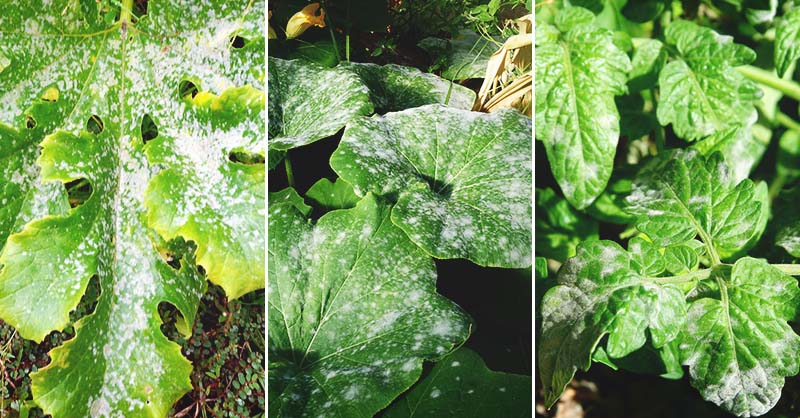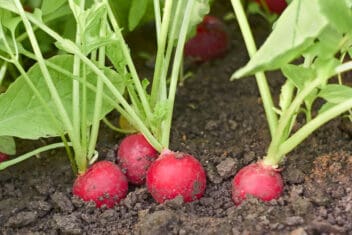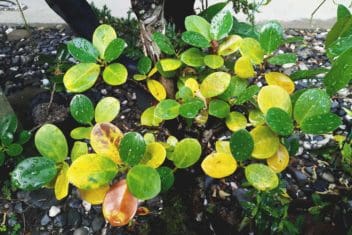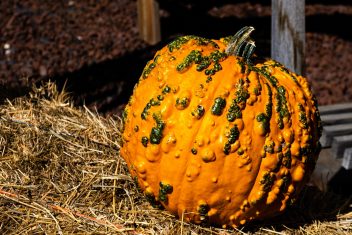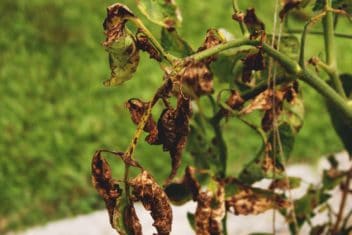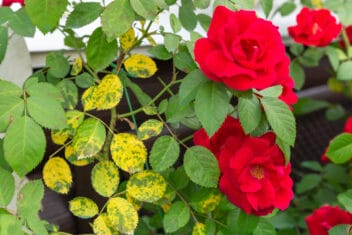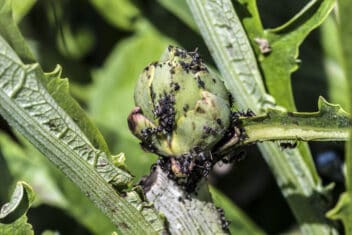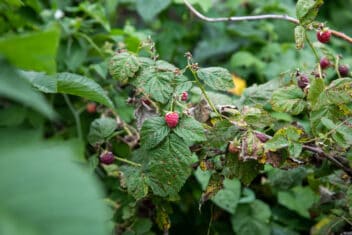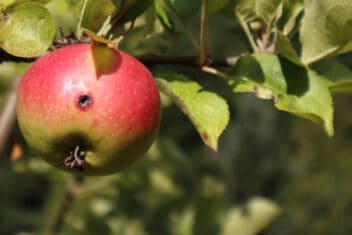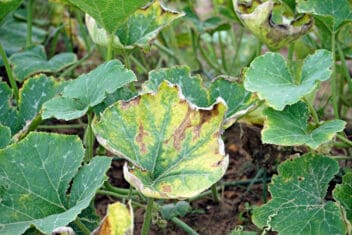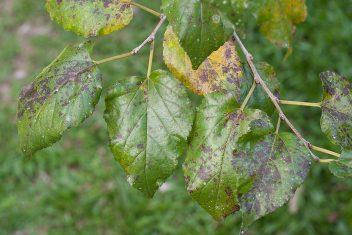Have you ever walked in your garden and were surprised to see your plants covered with powdered sugar?
If you’ve ever experienced this, the chances are that you have just encountered powdery mildew. It can wreak havoc on your garden if left untreated.
For that reason, it is important to understand what mildew is, what causes it, how to prevent it, how to treat it, and which plants are most susceptible.
If you want to know more about these answers, you’re in the right place because I’m going to fill you in. Here’s what you should be aware of when it comes to powdery mildew:
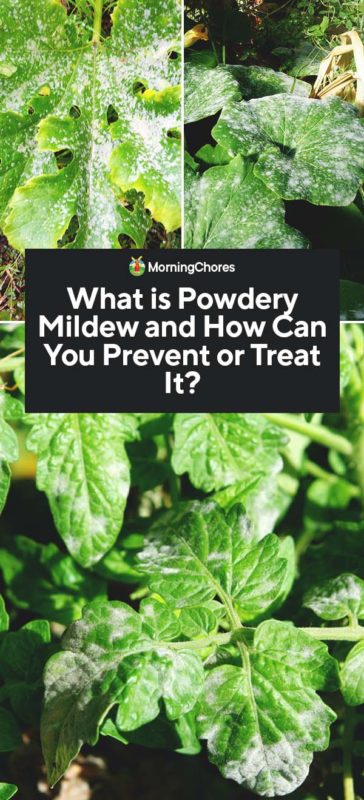
What is Powdery Mildew?
Powdery mildew is a fungus that appears on the leaves of plants. Different from typical funguses, it doesn’t need moisture to thrive on plants. However, because it’s still a fungus, it’s made up of spores that fly through the air due to wind and land on other plants, making it highly contagious.
Powdery mildew can slow plant growth, disturb the plant’s overall health, and can kill your plants in worst cases.
How to Identify Powdery Mildew
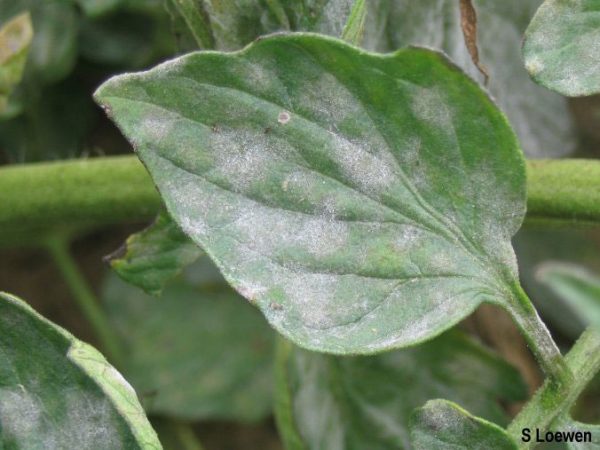
Powdery mildew on plants looks as though they have been dousing with flour or powdered sugar. The leaves of the plant will be covered in a white coating which may begin as small, white circular spots.
It’s common for this disease to attack older leaves on the plant first. If you notice the white coating and leaves beginning to look yellow and dried in appearance, it’s safe to assume your plant has powdery mildew.
Powdery mildew thrives in temperatures between 60-80ºF, so they most commonly exist in the earlier or later parts of the growing season, when temperatures aren’t extremely hot. This fungus also thrives in shady locations.
Once the fungus takes over the leaves of the plant, it’s common to see it attached to the blooms and other areas of the plant as well.
What Causes Powdery Mildew?
Any number of reasons can cause powdery mildew. Some of them are:
1. Shady Locations
There’s a reason why it’s recommended to place most garden plants in full sun. Not only does it give your plants the necessary sunlight they need to grow properly, but it also helps protect them from certain diseases.
Sunlight will keep your plant parts dry, which will create less of an opportunity for powdery mildew to form. If the plants you grow in must be planted in shady locations, be hyper-aware of this fungus.
The earlier you treat this disease, the better chance your plants have for thriving.
2. Improper Air Flow
When air can’t circulate through the plants, it creates a breeding ground for powdery mildew. It’s important to make sure air can travel between plants and through each plant because it allows them to dry faster after watering.
3. Water and Humidity
Powdery mildew loves high humidity and high-but-not-extreme temperature, which is why greenhouse plants can be more susceptible to this fungus, more so than indoor plants or plants growing outdoors because of the increase in moisture in a closed greenhouse.
Proper watering techniques can help to keep powdery mildew in check before it takes over your garden.
Which Plants Are at Risk of Powdery Mildew?
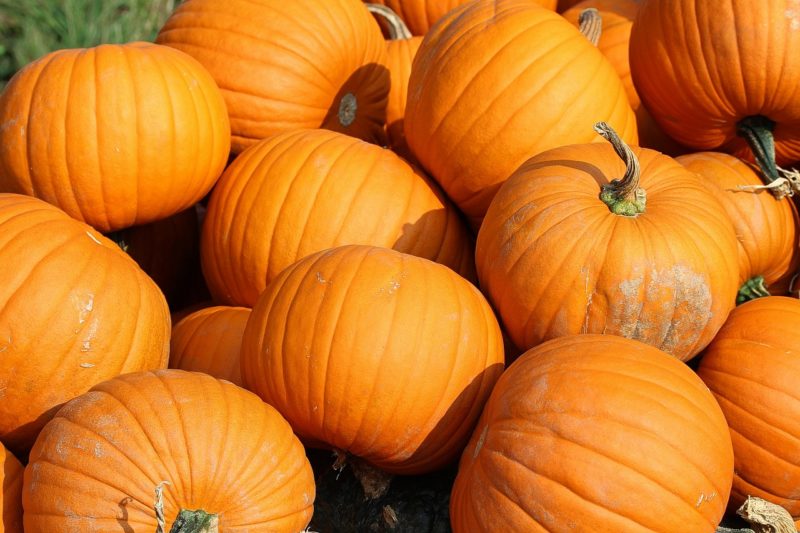
Powdery mildew does not discriminate and will infest any plant, given the chance. However, it does seem to form easier on some plants than others.
Plants with big leaves such as cantaloupe, cucumbers, melons, peas, pumpkins, and squash seem to contract powdery mildew easier than others. Plants with big leaves can block airflow and if there’s not much space between the plants.
How to Prevent Powdery Mildew

Powdery mildew can be a big pain for gardeners to treat once their garden get infested. If you take these prevention steps, hopefully, you won’t have to worry about ridding your garden of this fungus. Here are a few ideas to prevent powdery mildew in your garden:
1. Choose Resistant Varieties
You can purchase certain plant varieties which are known for being more resistant to powdery mildew. If you’ve battled powdery mildew in the past, try buying varieties which have been proven to stand up to it.
This is the best and easiest way to ensure your garden doesn’t have to worry with battling this fungus.
2. Proper Watering Techniques
How you water your garden can make all the difference in how well it thrives.
It’s a good idea to water your garden from below instead of overhead. When you spray water all over the garden, the area becomes more humid. The higher the humidity, the greater the opportunity for mildew to start and spread.
Also, give the plants time to dry before nightfall. If you can’t water in the morning, try to water in the early evening before the sun sets.
3. Pruning
Pruning your garden could save you a great deal of hassle in the long run. Cutting larger plants will create space within the plant itself and between the plants. This is a great way to increase airflow in your garden.
4. Fungicides
Fungicides are chemicals to destroy fungus. Applying fungicide to your garden before the appearance of fungus is a great way to deter it. Be sure to follow the instructions on the fungicide for proper application and frequency.
Keep in mind that not all fungicides are organic. If you want to keep your garden organic, make sure to specifically choose organic fungicides or make fungicides with organic ingredients.
5. Mulching
When you water your plants or when it rains, water get into the soil beneath the plant and some splashes on the plants. This is the primary way powdery mildew spores get onto the plant. Mulching around the base of the plant can help prevent this issue and keep mildew off your plants.
6. Milk and Whey
Using a mixture of 40% milk and 60% water is a great way of treating powdery mildew. Spraying the same mixture on plants is also a great way to prevent it in the first place.
The mixture raises the pH level of plant leaves. This makes the plants more immune to this fungus.
7. Compost Tea
Compost tea that is brewed from compost is full of beneficial microorganisms and is a great preventative of powdery mildew and other diseases. The beneficial microorganisms will help the plant’s immune system and helps fight off fungus.
Here’s a guide to help you learn how to make compost tea.
8. Companion Planting
One of the best practices for vegetable garden is companion planting. If you place some plants that are highly susceptible to powdery mildew next to plants that are more resistant next to a plant which is susceptible, you’re helping to protect the weaker plant.
9. Staking Plants
If you have larger plants flop over or sprawl out, you should stake them because plats that flop or sprawl can’t get proper airflow.
How to Treat Powdery Mildew
If one day you look outside to the garden and it appears as though someone tossed flour on your garden, the prevention steps above might be too late. Instead, you’ll need to how to treat powdery mildew. Here are a few tips:
1. Rub the Leaves Together
When you see the spores pop up on your plants, try rubbing the leaves together. This will rub the spores off the plants and stop the spreading on the particular plant you’re working on.
It may seem straightforward, but if you catch powdery mildew early on, this could be the only solution you need.
2. Remove Infected Parts
If multiple plants in your garden have been impacted by powdery mildew and the leaves beginning to look dry and discolored, you shouldn’t rub them and instead remove the infected parts.
If a plant has too many infected parts, it’s better to remove the entire plant.
Once you remove these parts or plants, do not compost them or the fungus will spread in your compost. Destroy the infected parts or plants to make sure the fungus doesn’t spread any further.
3. Fungicide
We’ve mentioned this solution on the prevention step, but as the name suggest, fungicide is a great way to treat fungus diseases like powdery mildew. Choose fungicides with potassium bicarbonate, sulfur, lime-sulfur, or neem oil as these ingredients each have qualities to quickly and effectively treat powdery mildew.
